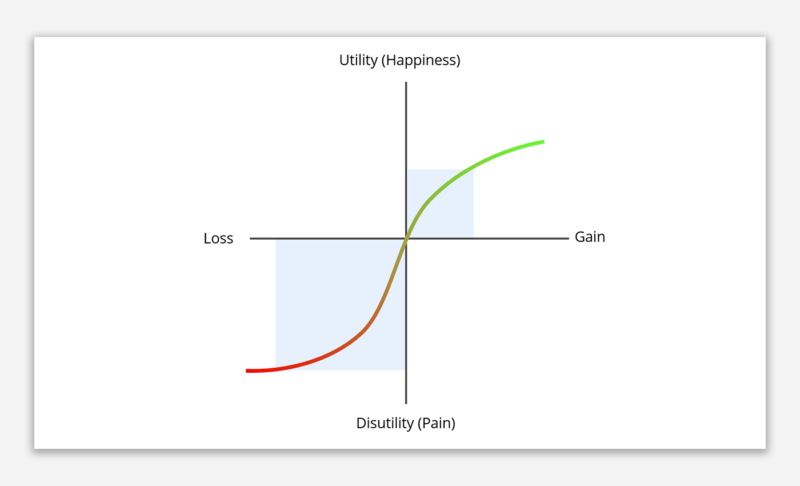
The focus of this article is on some of the most recent findings and debates in the discipline of behavioural economics and its application to sustainability. The examples are from the course I teach as part of the MA in Social Innovation and Sustainability at Thammasat University School of Global Studies.
Behavioural economics has become an essential part of the toolkit for sustainable development, as was highlighted by the UN’s Behavioural Science Week last week. It places human behaviour into the context of the real world.
I will discuss three levels of behaviour change, starting with the environment, by which I mean the physical environment, moving to the social environment and finally individual people.
Let’s start with the environment. Much of our behaviour depends on how we interact with our environment. Just think of how the design of physical spaces influences what we do. Winston Churchill observed that, “we shape our buildings, and thereafter they shape us”, as can be seen in the oppositional style of the UK House of Commons compared with debating in the round which is the style of the EU and other organisations.
We all hack our environment to make sure we do the things that we need to do (and sometimes to avoid the things that we don’t want to do). Have you been hanging a mask (or a reminder) on your door to make sure you don’t leave home without it? We can also see the structuring (or restructuring) of environments in the design of supermarkets and other retail outlets.
Many experiments have demonstrated the impact of designing canteens, and Google among others have adopted the learnings from these. Just to pick three examples, in many offices they have moved the location of salad bars and vegetable choices, made sweets and other high calorie foods less visible, and provided easy availability of water (including spring water) instead of soda drinks. All of these changes reflect the general principle of making desired behaviours more accessible and less desired behaviours less accessible. They all result in significant changes in eating.
What can be done to encourage more sustainable food choices? A series of experiments at Cambridge University showed that making changes to restaurant menus had a big impact on choices. They looked at thousands of food options and diners and then experimented with replacing meat-based menu items with plant-based menu items and other changes.
The simple act of moving from 1 out of 4 meat-free items to 2 out of 4 items, increased choice of plant-based choices by up to 80%. Nobody complained, as there were always meat-based choices available, and the potential environmental impact of this single change contributed to a 33% reduction in carbon emissions and a 28% reduction in land use.
Before I finish talking about environmental nudges, I would like to mention one current topic of discussion which is the distributional impact of nudging. In evaluating the effectiveness of an intervention, who benefits most from the intervention and who benefits least (or even pays a cost)? Should we be targeting interventions at the people who will most benefit in society?
Take an example of plant-based or even healthy foods versus so-called “junk” foods. If society decides to change financial incentive structures, by increasing or decreasing taxes on different types of food, does that benefit all of society and especially those most in need? Healthy or plant-based options may be outside the budgets of many families, whereas others are easily able to afford them.
That raises an additional question about the need for more targeted interventions. There is a current debate around the personalization of nudges. Personalization can mean personalization of goals and/or personalization of the mechanisms. This raises many issues around data and privacy and the ethics (and logistics) of government policies that are not universal.
Let’s move on to social nudges. Many of you will be familiar with the use of social norms in nudging people to make better use of energy and other resources. Before I moved to Thailand, my monthly statement for utilities in Singapore compared my performance with neighbours and the local community, as in one of the early nudge experiments with Opower in the US.
However, other experiments have shown that we need to be careful in using normative comparisons. In one study by Schultz, Cialdini and others, norms also had negative effects when comparisons showed that others were using more energy.
A specific challenge of sustainability is that many of the desired changes are minority behaviours and norms have less power to influence. One way that’s recently been tested to get around this problem is to talk about trends in behaviour, sometimes called “dynamic norms”.
If 20% of people consume sustainably that’s a minority. If the next year, 25% of people consume sustainably, that’s much better. If in the third year, sustainable consumption increases to 30% then we have a trend. The human mind is wired to assume that such trends will continue, making us more likely to want to be part of the trend.
Let’s look at a study that used dynamic norms in the context of plant-based food. A series of experiments compared static norms with dynamic norms, in terms of attitudes and beliefs and ultimately behaviour (in this case menu options in a restaurant). The studies show a significant impact of dynamic norms versus static norms including the choice of a meal without meat.
Another study showed shifts in the number of women considering and choosing STEM careers when presented with a dynamic norm (STEM stands for Science, Technology, Engineering and Mathematics).
Social norms are particularly strong in some cultures, which raises the question of the transferability of many behavioural economics findings. The majority of research in behavioural economics has been conducted with American university students and this is now being challenged as a model of universal human behaviour. For those of you who haven’t come across the acronym WEIRD it stands for Western, Educated, Industrialised, Rich and Democratic. WEIRD countries are unrepresentative of the global population. This is a great argument for doing more of this research in Thailand and other Asian countries!
Let’s move to our final theme of the individual and personal identity. “Don’t mess with Texas” is one of the more successful public messaging campaigns and is the state’s most successful effort to reduce litter. Previous campaigns had focused on civic duty and had failed, and it was decided to create a “tough-talking” slogan that addressed the unique spirit of Texas pride. Litter was reduced 29% in the first year with a 72% reduction in visible roadside litter after six years.
In invoking identity, nouns can be more powerful than words. One study compared the impact of “I vote” against the impact of “I am a voter”. Using nouns had a much bigger impact, marking the difference between “What I do” and “Who I am”.
At the same time, self-identity can be tricky, especially when labels are used which don’t fit with how people see themselves. For example, encouraging people towards plant-based diets doesn’t need to labelled as “vegetarian”, “vegan” or “healthy”, as people may not identify themselves with those labels and also they have negative associations.
It is better to focus on what people want from their food, especially taste. In one study, separating out vegetarian items on a menu led to a reduction in the number of people choosing those items.
More generally, people want products that do the job. For many, environmental impact is a concern, but it’s not the primary driver of choice. Companies like Unilever realize that although their reformulation of cleaning brands is a good thing for the environment, it’s not the main thing that will drive sales. That’s why they have introduced their recent reformulations of cleaning products by leading with their ability to remove stains before mentioning their environmental friendliness.
Let me try and pull these three themes together with a final example. In a series of experiments, Robert Cialdini and others tested how social identity influenced norms that people would follow. In a final experiment, they tested messages that reflected a generic guest identity, a specific room identity, a civic duty identity and a gender identity. The clear winner was the “same room” identity.
This leads me to the conclusion that getting people to behave more sustainably depends on reducing the physical and psychological distance between them and the desired behaviours. We often talk about sustainability issues in global terms, but it might be a better strategy to make them local. We have seen how creating momentum and the feeling of change can be more powerful than a simple social norm. And invoking personal identity to create a sense of ownership is important too. The smaller the gap, the more likely we are to change behaviour.
[This is a written version of a presentation for Thammasat University School of Global Studies graduate program on 15 June 2022. You can access the slides here.]





